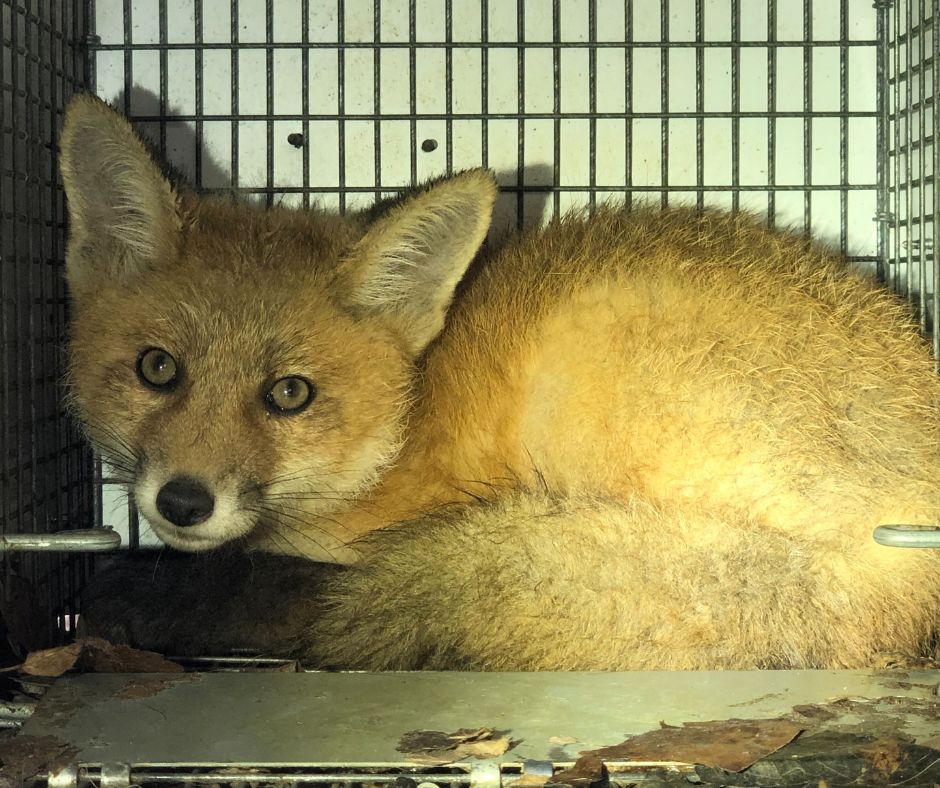 Understanding the Behavior and Habitat of Foxes in Suburban Areas
Understanding the Behavior and Habitat of Foxes in Suburban Areas
Understanding the Behavior and Habitat of Foxes in Suburban Areas
Foxes have become increasingly common in suburban areas, adapting to environments where natural habitats intersect with human developments. These intelligent and adaptable creatures are often seen in yards, parks, and even city streets, searching for food and shelter. Understanding the behavior and habitat of foxes is crucial for managing their presence effectively. By learning more about their habits, residents can take informed steps to coexist peacefully with these animals or implement appropriate removal and deterrent strategies. This blog will explore various aspects of fox behavior, habitats, and practical methods for managing their presence in suburban settings.
Fox Behavior in Suburban Areas
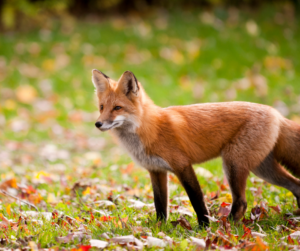 Foxes are primarily nocturnal, meaning they are most active during the night. This nocturnal behavior helps them avoid human interaction and reduces competition for food with other predators. You might spot them during dawn or dusk when they venture out to hunt and explore. Foxes are highly adaptable and have successfully integrated into urban and suburban settings. They utilize parks, gardens, and even alleyways for shelter and hunting grounds. Their ability to thrive in these environments is a testament to their resourcefulness and intelligence. In suburban areas, foxes maintain a varied diet, including small mammals, birds, insects, and even fruits and vegetables. They are opportunistic feeders and will scavenge from garbage bins or pet food left outside. Unfortunately, foxes will also prey on pets like house cats and small dogs. Understanding these aspects of fox behavior helps residents recognize and manage their presence effectively, ensuring a safer and more harmonious coexistence.
Foxes are primarily nocturnal, meaning they are most active during the night. This nocturnal behavior helps them avoid human interaction and reduces competition for food with other predators. You might spot them during dawn or dusk when they venture out to hunt and explore. Foxes are highly adaptable and have successfully integrated into urban and suburban settings. They utilize parks, gardens, and even alleyways for shelter and hunting grounds. Their ability to thrive in these environments is a testament to their resourcefulness and intelligence. In suburban areas, foxes maintain a varied diet, including small mammals, birds, insects, and even fruits and vegetables. They are opportunistic feeders and will scavenge from garbage bins or pet food left outside. Unfortunately, foxes will also prey on pets like house cats and small dogs. Understanding these aspects of fox behavior helps residents recognize and manage their presence effectively, ensuring a safer and more harmonious coexistence.
Common Fox Habitats in Suburban Areas
Foxes prefer to nest and den in secluded areas that provide safety and easy access to food. In suburban settings, they often choose locations such as dense shrubbery, under decks, and sheds, or even abandoned burrows created by other animals. It is common for foxes to dig their dens underneath porches and near your home’s foundation as well. Interaction with human-made structures is common, as foxes find these areas provide ample cover and protection. Seasonal changes significantly impact their habitat use; during warmer months, they may be more mobile, while in colder seasons, they seek out more sheltered, permanent dens to protect themselves and their young from harsh weather conditions.
Signs of Fox Presence
Identifying fox tracks and droppings is a key method of detecting their presence. Fox tracks are typically small and oval-shaped with distinct claw marks, often confused with small dog tracks. Their droppings, or scat, are usually dark, cylindrical, and tapered at one end, often containing fur, bones, or seeds from their varied diet. Visual and auditory signals are also common indicators. Foxes have a distinctive, high-pitched bark, often heard during night and early morning hours. Sightings of foxes are more likely during dawn and dusk, known as crepuscular activity periods. Recognizing den sites is another important aspect. Foxes prefer secluded, quiet areas such as under sheds, decks, porches or dense shrubbery, where they can safely raise their young. These dens are typically well-hidden and may have multiple entrances for easy escape. Observing these signs can help residents manage and mitigate fox presence in suburban areas.
Fox Removal and Trapping
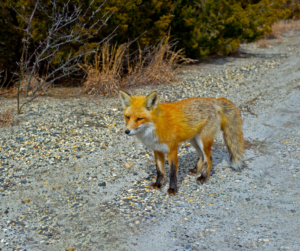 Effective fox removal and trapping require humane and strategic methods to ensure the safety of both the animals and the residents. Humane trapping methods often involve using baited live traps that capture foxes without causing harm, allowing for their safe relocation. Legal considerations and best practices are crucial in fox removal. It’s important to follow local wildlife regulations and guidelines to ensure ethical and legal compliance. This includes obtaining necessary permits and understanding local wildlife protection laws. The importance of professional removal services cannot be overstated. Professionals are trained to handle foxes safely and humanely, minimizing risks to both the animals and the property. They also provide valuable advice on preventing future intrusions. For effective and humane fox removal, trust the experts at Westchester Wildlife. Our experienced team is equipped to handle fox removal and trapping with the utmost care and professionalism. Contact us today for a consultation and ensure a safe and humane solution to your fox problem.
Effective fox removal and trapping require humane and strategic methods to ensure the safety of both the animals and the residents. Humane trapping methods often involve using baited live traps that capture foxes without causing harm, allowing for their safe relocation. Legal considerations and best practices are crucial in fox removal. It’s important to follow local wildlife regulations and guidelines to ensure ethical and legal compliance. This includes obtaining necessary permits and understanding local wildlife protection laws. The importance of professional removal services cannot be overstated. Professionals are trained to handle foxes safely and humanely, minimizing risks to both the animals and the property. They also provide valuable advice on preventing future intrusions. For effective and humane fox removal, trust the experts at Westchester Wildlife. Our experienced team is equipped to handle fox removal and trapping with the utmost care and professionalism. Contact us today for a consultation and ensure a safe and humane solution to your fox problem.
Fox Deterrents and Prevention
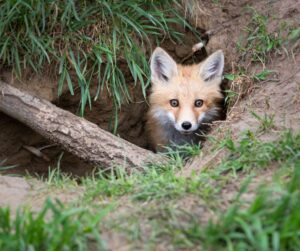 Effective deterrent methods are essential for keeping foxes at bay. Installing secure fencing around your property can prevent foxes from entering. Using repellents, such as commercial fox repellents or natural options like citrus peels, can also deter these animals. For professional advice and installation of deterrents, contact Westchester Wildlife for expert solutions tailored to your needs. Securing food sources and attractants is another key step. Ensure that garbage bins are tightly sealed, and do not leave pet food or bird feeders accessible overnight. Landscaping tips can also help discourage foxes. Foxes feel more comfortable in tall grass and dense shrubbery, so keeping your lawn cut short will make them feel exposed, therefore deterring them. Maintaining a tidy yard, removing dense shrubbery, and using motion-activated lights or sprinklers can make your property less appealing to foxes. By implementing these strategies, you can effectively manage and prevent fox presence around your home.
Effective deterrent methods are essential for keeping foxes at bay. Installing secure fencing around your property can prevent foxes from entering. Using repellents, such as commercial fox repellents or natural options like citrus peels, can also deter these animals. For professional advice and installation of deterrents, contact Westchester Wildlife for expert solutions tailored to your needs. Securing food sources and attractants is another key step. Ensure that garbage bins are tightly sealed, and do not leave pet food or bird feeders accessible overnight. Landscaping tips can also help discourage foxes. Foxes feel more comfortable in tall grass and dense shrubbery, so keeping your lawn cut short will make them feel exposed, therefore deterring them. Maintaining a tidy yard, removing dense shrubbery, and using motion-activated lights or sprinklers can make your property less appealing to foxes. By implementing these strategies, you can effectively manage and prevent fox presence around your home.
Best Fox Removal Service in Westchester, NY
Foxes are adaptable, nocturnal creatures that thrive in suburban areas, often creating dens in secluded spots and scavenging for food. Effective management involves humane trapping, securing food sources, and making your property less appealing through landscaping and deterrents. For those dealing with fox presence, seeking professional help ensures safe and effective removal. Westchester Wildlife provides expert fox removal and trapping services tailored to your needs. Contact us today to get started at (800) 273-6673.
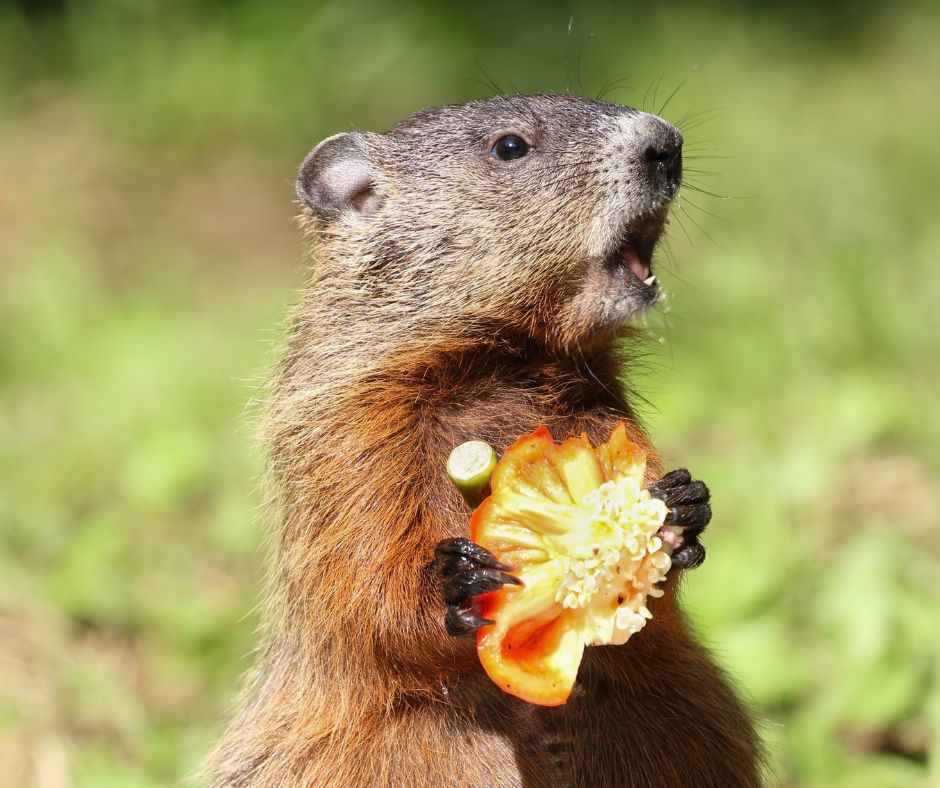 Eco-Friendly and Humane Wildlife Deterrent Methods for Your Garden
Eco-Friendly and Humane Wildlife Deterrent Methods for Your Garden
Eco-Friendly and Humane Wildlife Deterrent Methods for Your Garden
Spring and Summer are the gardening seasons, but homeowners are often frustrated by the presence of destructive critters like groundhogs and rabbits that can wreak havoc in your garden as they burrow underneath your plants and feast on your crops. Groundhogs and rabbits aren’t the only ones, as raccoons, squirrels, skunks, opossums and even deer are all known to get into gardens. Poisoning these critters is not only illegal, but it can also be very destructive on the local ecosystem. The best way to get rid of wildlife in your garden is through trapping and removal, wildlife fencing/barriers, and habitat modification. Thankfully, Westchester Wildlife can help. We offer the best wildlife trapping and removal services in the Westchester area, and we can also provide you with wildlife barriers. Contact us today to get started at (800) 273-6673!
Garden Pests
 There are several types of wildlife that you might find destroying your garden, burrowing underneath your plants and eating your fresh vegetables. Groundhogs are known to dig underneath gardens, disrupting root structures and displacing plants. Groundhogs are binge eaters, and will decimate a garden filled with delicious vegetables overnight. Rabbits will also dig into the ground, and they will damage and consume flowers, peas, beans, beets and more. While groundhogs and rabbits are the two most prevalent garden pests, homeowners also often have to contend with squirrels, raccoons, opossums and deer, all of which are omnivores and will stop by your garden for a quick snack.
There are several types of wildlife that you might find destroying your garden, burrowing underneath your plants and eating your fresh vegetables. Groundhogs are known to dig underneath gardens, disrupting root structures and displacing plants. Groundhogs are binge eaters, and will decimate a garden filled with delicious vegetables overnight. Rabbits will also dig into the ground, and they will damage and consume flowers, peas, beans, beets and more. While groundhogs and rabbits are the two most prevalent garden pests, homeowners also often have to contend with squirrels, raccoons, opossums and deer, all of which are omnivores and will stop by your garden for a quick snack.
Trapping and Removal Services
Having wildlife damaging your garden can be frustrating. Maintaining a garden is hard work, and all that work can be ruined by groundhogs or rabbits in a single night. Poisoning groundhogs and rabbits is not only illegal, but very dangerous, as that poison can enter the ecosystem and get into the water supply. Trapping groundhogs yourself can be difficult, as they are very clever and can easily evade less-experienced trappers. The best way to remove wildlife from your property and prevent them from entering your garden is to contact the licensed experts at Westchester Wildlife. Our technicians are highly-trained and experienced in trapping groundhogs, and we can safely and effectively remove them from your property. We can also trap and remove raccoons, squirrels, skunks, and any other critter causing trouble in your garden.
Wildlife Fencing Services
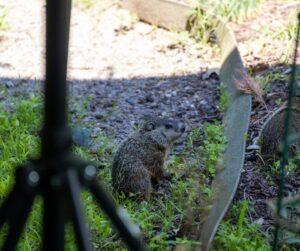 While trapping and removal services can get rid of any current critters causing problems on your property, this doesn’t protect against more animals coming back in the future. You can trap and remove a groundhog, but the next groundhog will come around eventually and decimate your plants. This is why preventative measures for garden nuisance wildlife are so important. One of the most important measures you can take for keeping groundhogs and other animals out of your garden is to install wildlife fencing or wildlife barriers around the perimeter of your yard, garden, or both. Mesh wildlife fencing can prevent critters from gaining entrance, and burying this fencing deep enough in the ground can prevent burrowing groundhogs from digging underneath it. Westchester Wildlife can install wildlife fencing and wildlife barriers anywhere on your property to keep critters from getting in and raiding your garden. We can install these barriers alongside the entire perimeter of your yard, or just along the perimeter of your garden. No matter what your wildlife fencing needs are, Westchester Wildlife can help.
While trapping and removal services can get rid of any current critters causing problems on your property, this doesn’t protect against more animals coming back in the future. You can trap and remove a groundhog, but the next groundhog will come around eventually and decimate your plants. This is why preventative measures for garden nuisance wildlife are so important. One of the most important measures you can take for keeping groundhogs and other animals out of your garden is to install wildlife fencing or wildlife barriers around the perimeter of your yard, garden, or both. Mesh wildlife fencing can prevent critters from gaining entrance, and burying this fencing deep enough in the ground can prevent burrowing groundhogs from digging underneath it. Westchester Wildlife can install wildlife fencing and wildlife barriers anywhere on your property to keep critters from getting in and raiding your garden. We can install these barriers alongside the entire perimeter of your yard, or just along the perimeter of your garden. No matter what your wildlife fencing needs are, Westchester Wildlife can help.
Habitat Modification:
 Habitat modification is a highly effective strategy for keeping groundhogs, rabbits, and other critters out of your vegetable garden. To begin, it’s crucial to eliminate any potential hiding places. Clear away brush piles, tall grass, and accumulated debris that provide cover for these animals. Regularly mow the lawn around the garden to reduce tall grass and remove any unnecessary vegetation. Removing potential food sources outside the garden is also essential; promptly clean up fallen fruits, nuts, and other edible debris that could attract these critters.
Habitat modification is a highly effective strategy for keeping groundhogs, rabbits, and other critters out of your vegetable garden. To begin, it’s crucial to eliminate any potential hiding places. Clear away brush piles, tall grass, and accumulated debris that provide cover for these animals. Regularly mow the lawn around the garden to reduce tall grass and remove any unnecessary vegetation. Removing potential food sources outside the garden is also essential; promptly clean up fallen fruits, nuts, and other edible debris that could attract these critters.
Another key tactic is to incorporate plants that naturally repel pests. Planting marigolds, garlic, and onions around the perimeter of your garden can serve as a natural deterrent due to their strong scents, which many animals find unappealing. Additionally, you can introduce herbs like rosemary and mint, known for their repelling properties.
Maintaining a clean and tidy garden is also critical. Regular weeding and pruning not only promote plant health but also reduce the garden’s appeal to pests. Composting properly and ensuring that garden waste is disposed of correctly can further minimize attractants. By implementing these habitat modifications, you create an environment that is less inviting and less accessible to groundhogs, rabbits, and other critters, thus protecting your vegetable garden from potential damage.
Best Wildlife Trapping in Westchester, NY
Groundhogs, rabbits, deer, raccoons, squirrels and skunks are destructive critters that can dig inside your vegetable garden, ripping up your plants and disrupting your root structure as well as your garden soil. Many of these critters will also eat your fresh vegetables, ruining all your hard work. Thankfully, there are ways to remove and deter these critters. Westchester Wildlife offers groundhog trapping and removal services to remove these destructive pests from your yard and garden. We can also provide you with wildlife fencing services to keep animals from returning to your garden once they have been trapped and removed. In addition, forms of habitat modification like keeping grass cut short, planting natural repellents like mint and cleaning up all fallen fruit, seeds or nuts can help prevent critters like groundhogs and rabbits from seeing your yard as a potential food source.
